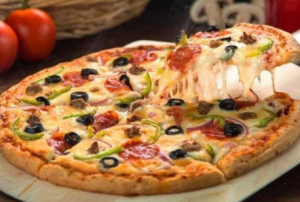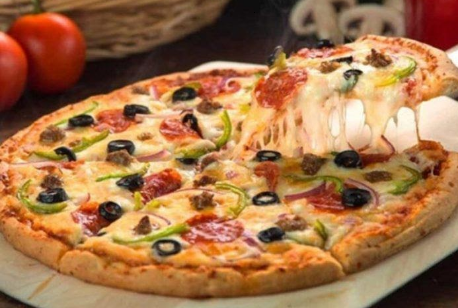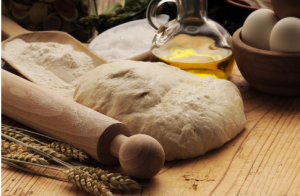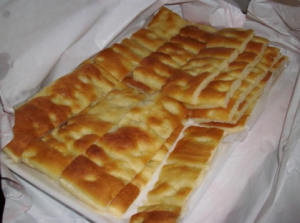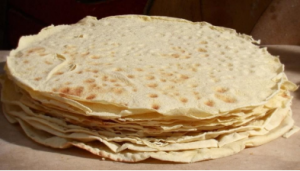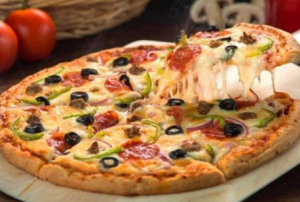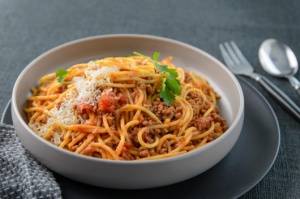The fame of Italian cuisine is largely due to the incredibly delicious pasta. The dough is generally something very ordinary – flour, water, yeast, and sometimes even without it.
Several additional products and spices can be added, but the base remains the same. That’s why people rightly ask themselves why Italian pasta is so irresistible.
Why can’t we resist when we smell the aroma of Italian pasta?
Although the basic products for making the dough are the same, the recipes are countless, more delicious than each other. And Italians really know how to cook them.
It is no coincidence that their pizzas and pasta are world famous. To them we can add the amazing breads that are baked in each city and region according to their tried and tested recipes.
One of the secrets for the preparation of irresistibly delicious pasta is the quality of the products used and, first of all, the flour, which is the basis of all of them. In Italy, each region boasts its own type of flour. Since 1998 the country has had legislation regulating the production and trade of this widely used product.
Another reason for the amazingly delicious pasta is in the preserved and passed down from generation to generation traditions for their preparation. You can eat pasta or pizza anywhere, but every Italian chef or ordinary housewife has their own secret recipe that can turn them into a masterpiece.
And something else. Just a well-prepared dough is not enough for an excellent end result.
Depending on the type of the product and the specific recipes, many other high-quality products made in sunny Italy are added to it, such as:
- cheese
- sausages
- fresh vegetables
- olives
- mushrooms
- olive oil and many aromatic spices.
After all, Italian pasta spreads aromas that are hard to resist, and the taste is indescribable. You just have to try.
Thanks to its ingredients and production technology, Italian pasta, which is an essential part of the Mediterranean diet, is defined as very healthy.
Italian breads – the pride of each region
Every Italian region is rightly proud of its unique bakery products. Some of them are typical for only one settlement, while others have conquered the whole country.
Focaccia Genovese is the bread emblem of Liguria . It is prepared from wheat flour, olive oil, salt, water and yeast. It is traditionally sprinkled with olives or sage. But that’s not all. There are many versions such as the focaccia with onions. Some more modern options are stuffed with meat, cheese, tomatoes and even a sweet version with nuts and raisins.
No less famous is the Italian Chabata. It is easily recognizable by its dark bark and highly porous interior, and its taste is delicate and slightly salty.
Rural Pane Cafone bread is typical of Campania, but is popular throughout Italy. The dough is made from a mixture of wheat and semolina, which makes the bread taste richer. The crust is crispy but a little firm, which does not prevent Pane Cafone from being recognized as one of the best breads in the whole country.
In Umbria they are proud of their Pan Caciato – bread with cheese, which follows the traditions of classic Italian cuisine. In addition to flour, water and yeast, it contains Pecorino cheese, olive oil, walnuts and raisins.
There are Italian breads that are quite different from the traditional forms of these products. Such is the Sardinian Karasau, whose other name sounds like carta da musica, which means musical paper. It is incredibly crunchy and produces “musical” noise when chewed.
It is mixed with durum wheat flour, yeast, water and salt Karasau can be consumed with salty and sweet things. Soaked in water, it can be used as a base for various fillings of meat, cheese and vegetables.
Very popular are the Italian grissini , which originate from Piedmont. They are thin sticks with a length of 20 to 80 cm. They are prepared from wheat flour, milk, water, yeast and salt, and sometimes butter is added. Crispy Grissini are a favorite of everyone and especially children.
The amazing Italian pizzas
The aroma of freshly baked pizza can divert anyone from their path to a nearby pizzeria. The queen of Italian cuisine is not very difficult to prepare, but for a good result you must use quality products and follow certain rules.
First, you need to choose the right flour. Italians use type 00 flour, which contains more gluten than other flours, because it produces a crispy crust.
The sauce should be simple, but it is not good to use ready-made tomato paste, but fresh or canned tomatoes. Many pizzerias do not pre-prepare the sauce, but place the tomatoes directly on the dough. Various products, such as sausages and cheese, can be used for garnish, and it is best to use seasonal vegetables.
Typical Italian pizza is thin and crispy enough. It’s almost liquid in the middle, thanks to the rich tomato sauce and at the same time has a crispy and well-toasted crust.
Mozzarella, basil and olive oil are the most characteristic ingredients in many types of Italian pizza. Among the most popular pizzas are:
- Margarita
- Neapolitan
- Quatro Formaggi
- Calzone
- Quatro Stagioni
- Seafood
- Capricciosa and many others.
The pasta spreads the fame of Italy around the world
Pasta is one of the diamonds in the crown of the Italian culinary tradition. It is believed that as soon as people start grinding flour, the predecessor of modern pasta appears. It was just dough made of flour and water, baked in the sun. Now making pasta has become an art, and his masterpieces are hundreds.
Today, more than 350 types of pasta are available on the market. Italian pasta comes in different shapes and sizes, and its representatives:
- spaghetti
- foam
- linguine
- tagliatelle
- fettuccine
- rigatons
- cannelloni
- bucatini are already known on all continents.
The classic dried pasta is made from durum wheat. The most popular option for cooking pasta is to a condition called “al dente”. This literally means “to the tooth”, and the requirement is to maintain a slight firmness in the middle of the paste. The pasta is combined with vegetables, cheese, sausages, bacon, chicken, minced meat and more.
Fantastic Italian sauces have a great contribution to the taste of the original pasta. Here are some of them:
- bolognese
- carbonara
- Neapolitan
- tomato
- cream sauce with mushrooms
- marinara and many others.
Many of the dishes are named after sauces, such as Spaghetti Bolognese or Tagliatelle Carbonara. Among the most popular examples of Italian cuisine are also the uniquely delicious lasagna and ravioli.

